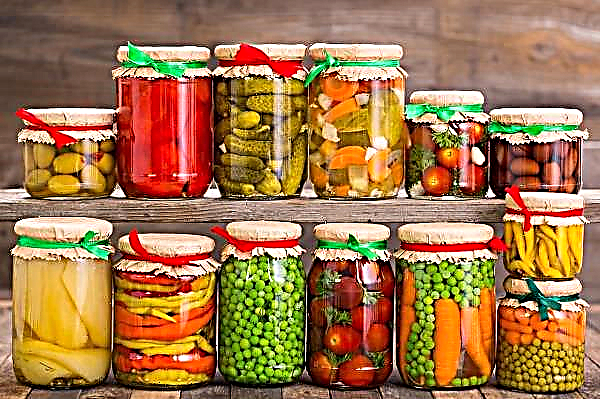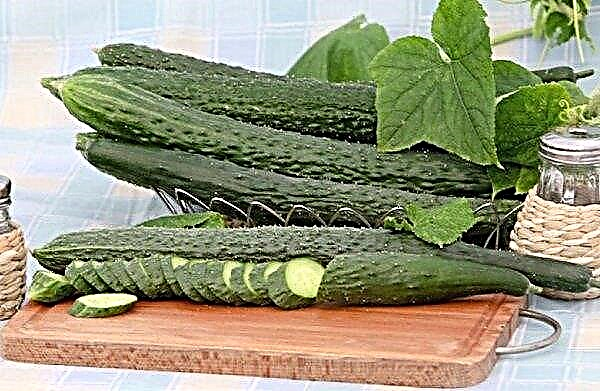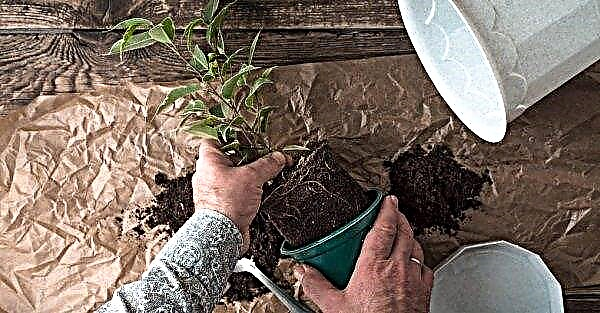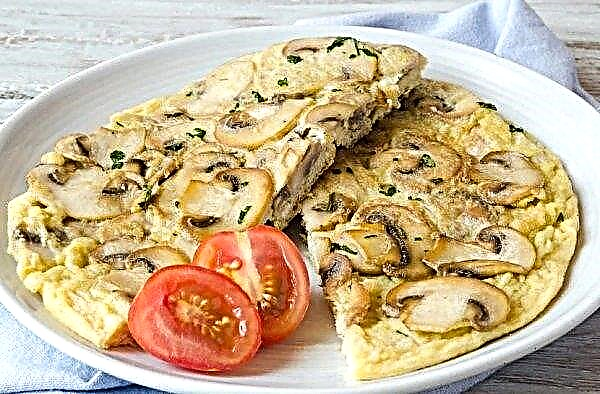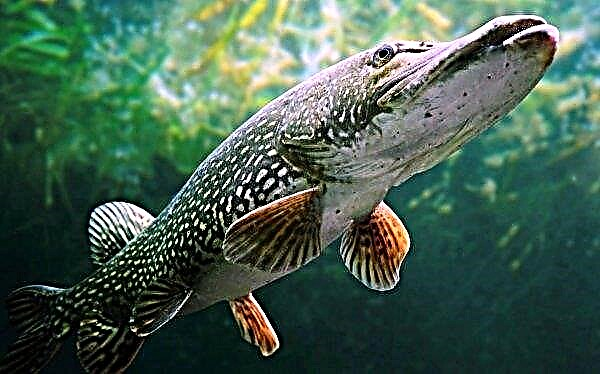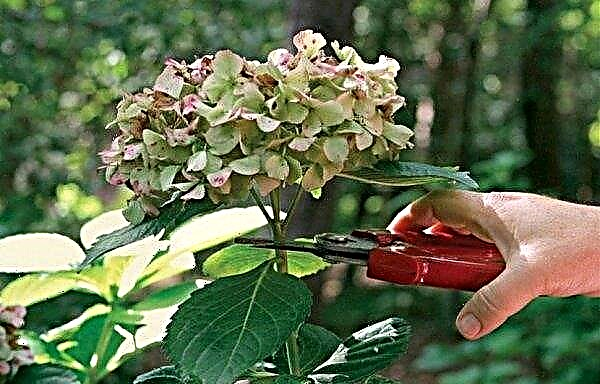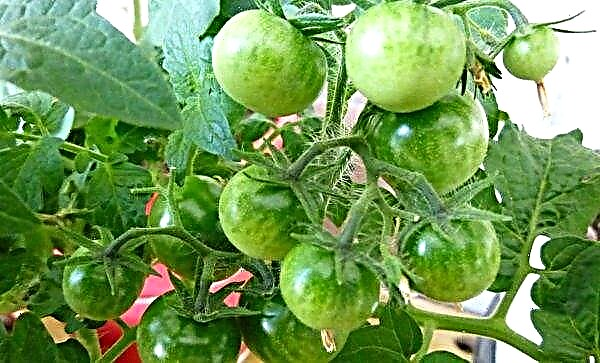In 2010, a variety of panicled hydrangea Sunday Fries was bred from France, the well-known beauty Vanilla Freise at that time. The new variety is characterized by the compactness of the bush and the delicate color of the flowers. Due to its low growth, this hydrangea can be used in landscaping for landscaping even the smallest areas, creating original hedges, as well as in combination with other shrubs and flowers. It looks very harmonious and spectacular in various combinations, which is why gardeners and landscape designers are happy to use it in their projects. Hortensia Sunday Freise adorns city parks, and is also often planted along walking paths.
Botanical Description
This variety grows in the form of a spherical bush. It is very neat, so it does not need formative pruning. On the flexible shoots of reddish-brown color, elongated elliptical leaves of dark green color are located about 10-12 cm in length.
Blooms Sunday Friis, starting in June, with white and pale pink flowers collected in pyramidal panicles up to 30 cm long. At first they are painted only in white, but a little later a pink hue appears, and closer to the end of flowering - bright raspberry. The saturation of the color depends primarily on the acidity of the soil on which the shrub grows.
Did you know? Breeders call the Sunday Freeze nothing more than "strawberry ice cream." This name was given to the variety for its delicate coloring.
Variety Characteristics
The variety Sunday Freeze is appreciated for its characteristics, among which the following are important:
- height - up to 1 meter;
- crown diameter - about 1 meter;
- inflorescences - panicles;
- flowering - from June to October;
- growth rate is fast enough;
- frost resistance - up to -20 ° С;
- the soil is acidic;
- lighting - partial shade.
How to plant
Compared to many varieties of hydrangeas, which are not particularly whimsical to the conditions of growth and care, Sunday Frize will not grow if it is poorly looked after or planted in inappropriate places. Planting is best done in the spring so that the plant has time to take root and strengthen before wintering.
Video: Hydrangea Sunday Freeze
Seat selection
Primarily you need to protect the bushes from too much wind and too bright sun, otherwise they may die immediately after planting. This variety develops well in partial shade or even in the shade. Adult plants in the open sun will look unhealthy, and their flowering quality will deteriorate. And if there are trees nearby with a not too thick and openwork crown, hydrangea can bloom abundantly and fairly long.
Important! The branches of Sunday Freise are very tender and often break under the weight of large inflorescences, so they must be tied to a support at the time they bloom.
The main thing is that the trees nearby should not have a very large root system, otherwise it can literally dry hydrangea, taking all the water from the soil. This gentle variety needs constant watering, because it does not tolerate drying out of the soil at all. But despite the increased hydrophilicity of this plant, it is impossible to allow swamping under its bushes.

Soil preparation
For planting this beautiful panicle hydrangea Sunday Freeze you need to prepare the soil mixture that is most suitable in composition. To do this, in equal amounts combine sheet and sod soil, peat, humus or compost, as well as river sand. A similar mixture can be bought at a flower shop - in which case it will contain all the necessary components.
If necessary, acidity can be increased.by adding a tablespoon of vinegar or a pinch of citric acid in 10 liters of water and watering the soil with this solution. The optimal pH of the soil for landing Sunday Fries is 5.0.
Landing process
After you have chosen a suitable planting material, you can begin to plant it in the ground.
It doesn’t matter if you bought seedlings or grown on your own, planting is carried out according to the same scheme:
- Dig a hole with a depth of about 40 cm and a diameter of 70 cm.
- Fill it in a third of the previously prepared soil mixture.
- Place a seedling in the pit, carefully straighten the rhizome and cover it with the rest of the soil.
- Tamp the ground slightly, taking care not to damage the roots, and leaving the soil slightly loose for better access of water and air to the plant.
- Water well by pouring one bucket of water into the trunk circle, and then mulch the soil under the bush for better moisture retention.

Care Features
Hydrangea Sunday Freeze is very water-loving, so you must not forget to water it well, and also sprinkle the soil with mulch. She also needs regular feeding. And since this variety does not tolerate wintering very well, for this period you need to prepare the bushes in advance.
Watering and mulching
Sunday Freyz does not tolerate very dry soil water the plant regularly and plentifully, pouring every day at least half a bucket of water under each bush. On hot summer days, you can use a whole bucket. Of course, you need to ensure that the water does not stagnate near the rhizome, because this can also greatly damage the plant.
Important! When planting hydrangea, in no case should you fill the root neck with earth, otherwise the plant may die.
Water for irrigation must be warm and settled. It is best, of course, to use rain, because it is much softer. But hydrangea can not be watered with tap water and not defended water, since it contains lime in quantities destructive for bushes.
After the first watering, you need to loosen the soil so that it passes water and air well, and then mulch it with peat or sawdust, due to which the soil acidity will increase, and the moisture will evaporate much more slowly. In the future, you need to loosen two to three times per season, only very carefully so as not to damage the rhizome, which is very close to the surface of the earth.

Top dressing
Fertilizing under the bushes is necessary during the growth period, and especially at that moment when the plant is blooming and needs additional energy sources. Top dressing should be carried out, alternating organic fertilizers with mineral mixtures.
Of organics, a solution of mullein and chicken droppings is best suited, but fertilizing with minerals must necessarily contain potassium and phosphorus compounds.
The first spring top dressing introduced at the beginning of sap flow to strengthen the leaves. It includes a solution of mullein in a proportion of 1:10, as well as urea and potassium sulfate in half a tablespoon, dissolved in 5 liters of water.
During bud formation Bushes must be watered with a solution of superphosphate. For this, 1 tbsp. l of dry fertilizer is dissolved in 10 l of water.
During flowering fertilizing should be done twice a month. To increase the number of ovaries mix 1 tbsp. l of fertilizers "Nitrofoska" and "Agricola" and dissolved in 10 l of water. It is also recommended to water the bushes with kefir, whey or yogurt diluted in water in a ratio of 1: 3.

Since august You cannot feed Sunday Freeze with nitrogen fertilizers, as they increase the green mass, which can cause the bushes to deform.
To be sure that hydrangea gets everything necessary for the proper growth and development of a substance, it is better to buy fertilizers for flowers, which can be found in every specialized gardening store.
Important! Pink varieties of hydrangeas tolerate wintering worse than others, because they are the most tender and fragile.
Trimming and Shaping
Cut hydrangea bushes in spring and autumn. In mid-April, all frozen and damaged parts of the plant must be removed. And in the fall, all dried inflorescences are cut off, as well as part of the shoots. As a rule, too old branches are cut out completely, and young ones are shortened a little more than half the length. Thanks to this, plants will better tolerate winter and will bloom well next year.
This variety practically does not need forming clippings, because its bushes are very neat even without it. If there are too long branches, knocking out of the big picture, they can be shortened.

Winter preparations
At temperatures up to -20 ° C and with good snow cover, Sunday Freise can calmly winter, but often flower buds freeze very strongly during the first spring frosts even at -18 ° C. To protect them, it is advisable to cover the bushes. In particular, such events will be necessary in regions with harsh climates.
After autumn pruning, the shoots need to be tied, tilted to the ground and fixed. Sprinkle with leaves on top and, so that they do not fly apart, put on them, for example, a piece of slate. Or you can cover everything with plastic wrap and nail it to the ground. To prevent the plant from rippling, it is worth making holes-vents, but at a very low temperature they must be closed. In snowless winter, it is recommended to put spruce branches or branches on the film.

Breeding methods
Panicled hydrangea Sunday Fraz is practically not propagated by seeds, because they have very poor germination. Moreover, this method does not guarantee that varietal features will be preserved. Most often, propagation occurs by cuttings, layering or dividing the bush.
Cuttings
Cuttings are cut during anti-aging pruning of bushes. It is advisable to take them from the side shoots, so that they take root better. Cut off the parts of the shoot with two pairs of leaves. The lower two sheets must be removed immediately, and the upper ones should be shortened by half. For a couple of hours, the cuttings are soaked in a solution of a special tool that helps to quickly take root. It may be "Kornevin," but if it is not, you can dilute a teaspoon of honey in a glass of water. The effect will be almost the same.
After soaking, the cuttings are planted in the soil, consisting of peat and sand in equal parts. You can purchase a special substrate in the store for planting flowers. It is permissible to plant both in separate pots and in common containers.
As a rule, most cuttings are taken well, take root, and subsequently grow full-fledged bushes. The main thing is that they are deepened into a substrate by two buds, and also you need to remember to water them every day, and also protect them from direct sunlight and wind. For better protection, the containers are covered with a film, which is removed only after the first sheets appear. Young plants can be left to winter on the street, but for this they must be covered with spruce branches.
You can plant seedlings obtained from cuttings in a permanent place on the 2nd or 3rd year. This is the easiest way to reproduce, so it is used more often than others.
Did you know? Archaeologists proved that hydrangea existed 40 thousand years ago.
Layering
This method is different in that it brings a small number of seedlings, but it is also used quite often. To obtain layering, the branches are bent to the ground, fixed and sprinkled with soil. For this purpose, you need to choose only the youngest and strongest.
Layers remain wintering in this form, covered with spruce branches. And only in the next year they are separated from the mother plant and planted in a separate place on the bed, slightly shaded, without direct sunlight, where they will have to be in a state of full-fledged seedlings for planting in a permanent place.
Dividing the bush
This method is rarely used, because it can lead to damage to the root system or the entire plant.. Therefore, only very old bushes are propagated by division, which need to be transplanted to a new place.
Each divided bush is planted according to the same rules as purchased seedlings.

Diseases and Pests
Hydrangeas rarely get sick. And, as a rule, this is due to improper care or lack of nutrients and moisture.
Sunday Freise is sometimes affected by such diseases:
- Downy mildew - the appearance of spots with a greasy sheen on the leaves, leading to their wilting. Typically, this problem occurs due to cold and damp.
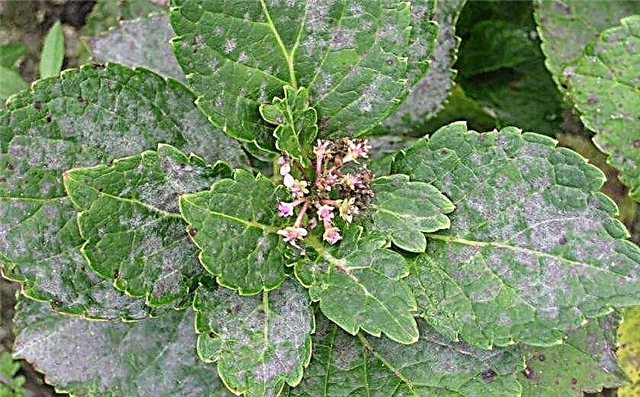
- Chlorosis - pale spots on the leaves, which may be caused by too alkaline soil due to the content of lime in it. An excess of humus can lead to chlorosis.
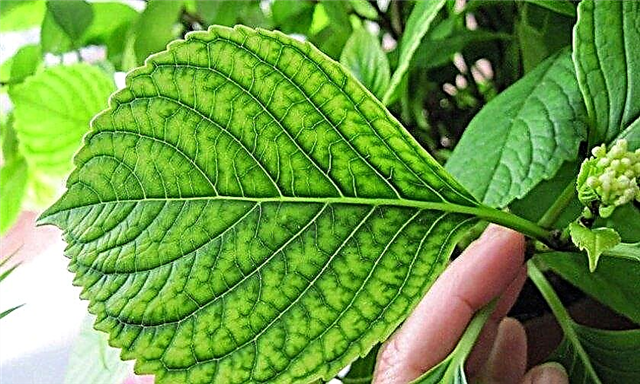
- Gray rot - browning of leaves, which in a neglected situation can spread throughout the plant.
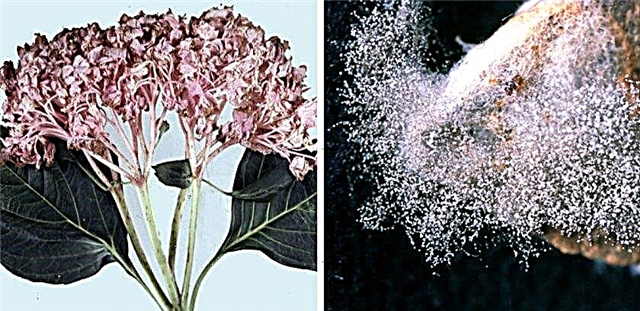
- Ring spotting - a viral disease that manifests itself as spots on leaves in the form of rings.
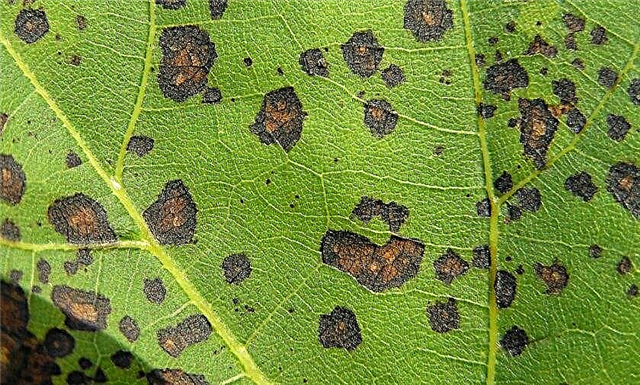
Unfortunately, plant viral diseases are not treatable., therefore, with a lesion of ring spotting, the bush needs to be dug up and burned.
And here fungal diseases such as powdery mildew and gray rot are treated by spraying with copper sulfate or fungicides such as Topaz, Prognosis or Bordeaux fluid. To get rid of chlorosis, you need to treat the plant with iron chelate or potassium nitrate, as well as be sure to adjust the acid composition of the soil and the schedule for fertilizing.
Did you know? Hydrangea in the language of flowers means: modesty, sincerity and hope.
Pests may sometimes appear on leaves and shoots, among which the most common are ticks, leaflets and aphids. Insecticides are used to combat them. Most often, these are Actellik, Fitoverm, Iskra and Aktara.

And, of course, we must not forget that the best cure for diseases and pests is prevention. To do this, you need to regularly examine the hydrangea bushes for the appearance of painful spots or insects, and immediately when the first signs appear, begin to fight them. And you also need to consider all the requirements for the place of planting and care of this plant, otherwise any violations can cause its condition to worsen.
Hydrangea Sunday Freise is one of the most whimsical, therefore, its cultivation must be approached very responsibly. Despite all the disadvantages that are inherent in this variety, it is often used by gardeners and landscape gardening designers, because it can grow even in the shade and where there is a sufficiently strong gas contamination. And, of course, the most important advantage of Sunday Freise is its very delicate and attractive inflorescences that will not leave anyone indifferent.
Network user reviews
I made a conclusion: Sunday Freise with a very short pruning is great. The shoots are strong, the caps are beautiful and the dimensions are quite compact. And the second conclusion is that if you cut off the "not young" hydrangea to the stump, then several shoots will all the same grow from the root. It’s time for me to update the bushes and I am in doubt about how to do it. In the literature, it is recommended not to cut the entire bush immediately, but partially. But then it turns out that the branches will be of different ages and it will be difficult to form an even skeleton, the bush will be skewed, the bouquet will not work. And if you leave only young growth and form a new bush for it, then how will this affect the roots? After all, part of the roots will be left without food, will they die off? Please share knowledge, hydrangea lovers !!!
http://www.sadiba.com.ua/forum/showpost.php?s=d3bb3c11809c72d3904faa0394c29fe0&p=1110427&postcount=702






